8 Signs of Clogged Sewer Line
A clogged sewer line occurs when the main pipe carrying wastewater from your home becomes blocked, preventing proper drainage. This blockage can disrupt your entire plumbing system, leading to unpleasant backups, slow drains, and potential health risks from raw sewage exposure.
The good news is that there are always warning signs before the situation worsens. Being aware of these signs and taking timely preventive action can help resolve the issue before it escalates, saving you from costly repairs and potential damage to your property.

Top 8 Signs of a Clogged Sewer Line:
- Sign 1: Slow Drains
- Sign 2: Gurgling Noises from Pipes
- Sign 3:Foul Odors Near Drains
- Sign 4: Standing Sewage in Fixtures
- Sign 5: Toilet Overflow or Bubbling
- Sign 6: Sewage Backup in Bathtub or Shower
- Sign 7: Multiple Drains Clogged Simultaneously
- Sign 8: Water Backing Up When Using Appliances.
Sign 1: Slow Drains
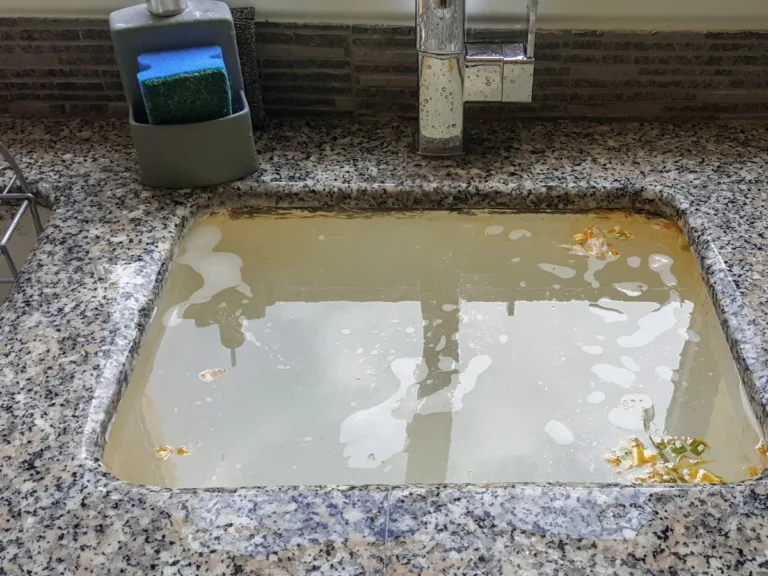
If you notice water draining slowly from sinks, tubs, or showers, it’s often the first indication that something is obstructing the flow in your sewer line. While a single slow drain might be caused by a localized issue, like hair clogging the shower drain, slow drainage across multiple fixtures is a clear sign of a potential clog in the main sewer line. For example, you might observe slow drainage in the bathroom sink and later see the same in the kitchen sink or bathtub. This issue can become more common during the fall, when tree roots seek moisture and infiltrate pipes, or during the winter when soil shifts and exacerbates existing clogs.
Sign 2: Gurgling Noises from Pipes

Once you’ve noticed slow drains, gurgling or bubbling sounds in your pipes indicate trapped air trying to escape due to a blockage. For example, after using the bathroom sink, you may hear gurgling from the toilet or bathtub. These sounds typically worsen during spring and fall when moisture encourages tree roots to infiltrate the sewer system, further blocking the pipes and increasing pressure.
Sign 3: Foul Odor Near Drains

Foul smells surrounding areas like the kitchen or bathroom, especially after hearing gurgling noises or seeing slow drains, is a sign the clog is worsening. Strange smells near drains, such as rotten eggs or sewage, can be a warning that gases from the sewer line are escaping due to a blockage or venting issues. These smells tend to be more intense in summer when high humidity exacerbates gas buildup in the pipes.
Sign 4: Standing Sewage in Fixtures
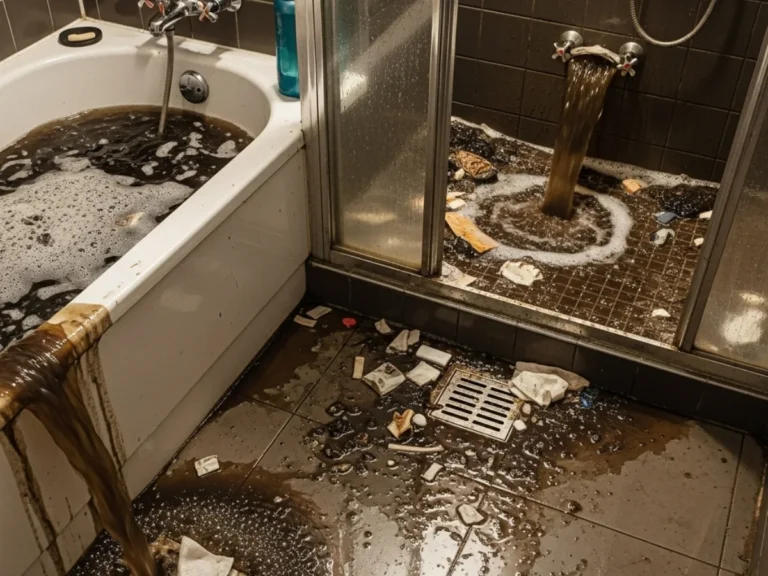
When sewage backs up into fixtures like bathtubs, showers, or floor drains, it’s an indication of a severe blockage, often a near-complete obstruction in the main sewer line. If you’ve noticed slow drains and gurgling noises before, standing sewage is likely the next step of escalation. For instance, after using the toilet, you might see water rising in the bathtub or shower. This issue is especially common during spring and fall when heavy rains or thawing snow can cause excessive water flow, putting additional stress on already-blocked pipes.
Sign 5: Toilet Overflow or Bubbling
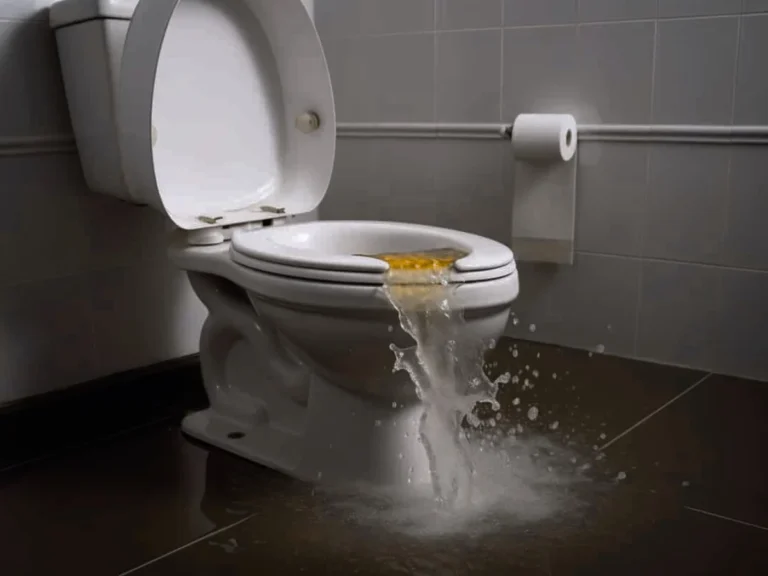
Toilet overflow and bubbling usually follows after standing sewage or slow drainage has been noticed. This is also a common sign of air pressure issues or blockages in the main sewer line. Bubbling occurs when trapped air is forced back through the toilet after using other fixtures like sinks or bathtubs, while overflow happens when waste cannot exit due to a blockage. These symptoms may appear suddenly, often after using appliances like dishwashers or washing machines. This issue is more likely to occur during the winter and spring, when freezing pipes or growing tree roots temporarily block the sewer line, causing air pressure imbalances.
Sign 6: Sewage Backup in Bathtub or Shower
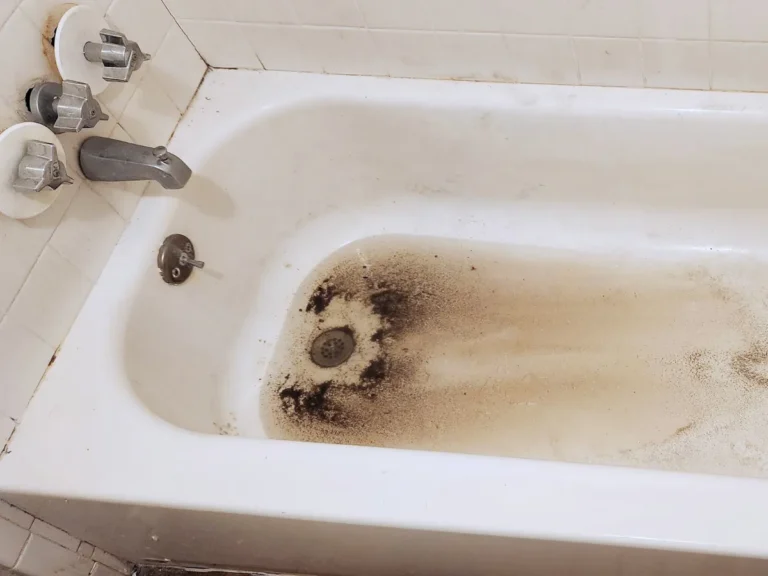
When sewage backs up into your bathtub or shower drains, it’s a clear sign of a blockage in the main sewer line. If you’ve previously noticed slow drains or gurgling noises, this sign indicates that the clog has become more severe. For example, you may see dirty water rising in the shower after using the toilet. This is especially common during rainy seasons, as excessive water flow can exacerbate an existing blockage, causing the sewage to back up into the lowest points of your plumbing.
Sign 7: Multiple Drains Clogged Simultaneously
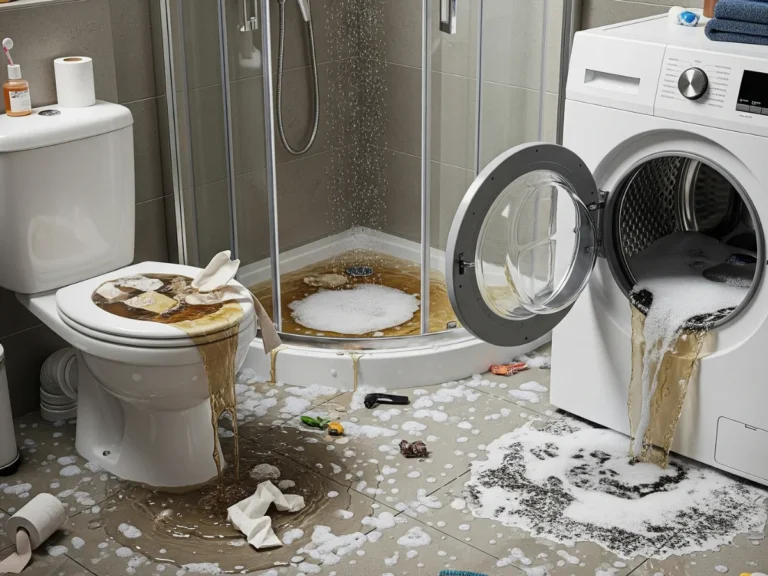
When several plumbing fixtures fail to drain at the same time, it’s a clear sign that the main sewer line is obstructed. For example, you might notice that while using the washing machine, water rises in the toilet, or a shower backs up when you flush the toilet. These problems are abnormal and signal that the clog is affecting your entire drainage system. Seasonal changes, especially spring and fall, can worsen this situation, as roots from large trees grow during wet months and infiltrate sewer lines, creating blockages that affect multiple drains.
Sign 8: Water Backing Up When Using Appliances
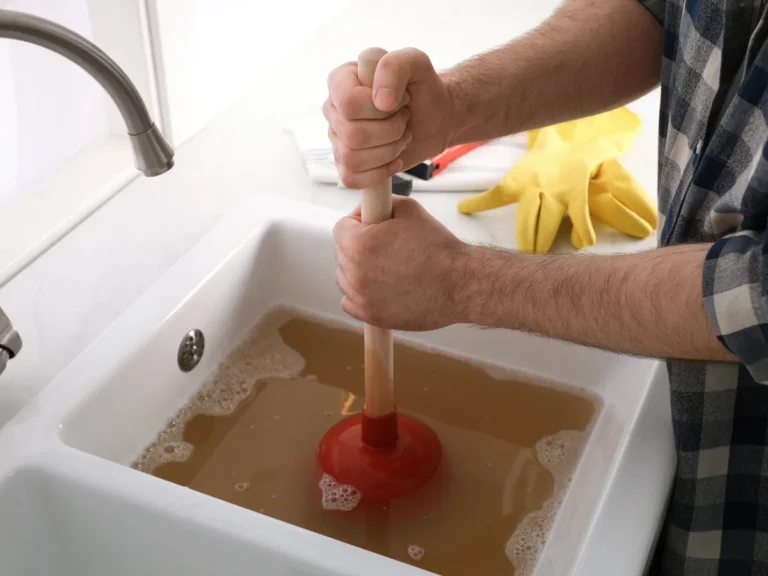
If you notice water backing up into tubs, toilets, or sinks after running appliances like washing machines or dishwashers, it signals that the sewer system is overwhelmed. The main sewer line is partially or completely blocked, causing overflow across multiple fixtures. For example, water from the dishwasher may back up into the sink or toilet. This is often exacerbated during the rainy season or when snow begins to melt, as the added moisture puts additional pressure on an already clogged sewer line.
Causes of Sewer Line Clogs
Understanding the common causes of sewer line clogs, such as grease buildup, tree roots, mineral deposits, and pipe collapse, is essential for preventing issues and maintaining a healthy plumbing system. Each of these factors can obstruct the flow of wastewater, leading to slow drains, backups, and potential plumbing disasters. Here’s how each cause contributes to blockages:
- Flushed Products: Many so-called “flushable” products, like wipes, paper towels, and hygiene items, do not break down properly in water. These items can accumulate at pipe junctions, leading to clogs. They are one of the top causes of emergency plumbing calls. To prevent blockages, only flush human waste and toilet paper. Also, place signs near toilets in households with children or guests.
- Grease Buildup: Pouring cooking grease and food oil down the kitchen sink may seem harmless, but as it cools, it hardens and clings to pipe walls. Over time, this creates thick sludge that traps debris and narrows the pipes. To avoid this, collect cooled grease in containers and dispose of it in the trash. In commercial kitchens or large households, installing grease traps can help prevent buildup.
- Tree Roots: Tree roots naturally grow toward moisture, including sewer lines. They can enter through small cracks or joints in pipes, expanding and causing blockages that break or shift the pipes. This is common in older homes or those with large trees nearby. Installing root barriers, using root-killing treatments, and scheduling annual inspections can help prevent damage.
- Limescale Deposits: Limescale is the hard mineral buildup caused by calcium and magnesium in hard water. These deposits reduce the diameter of pipes, slow water flow, and make it easier for other clogs to form. Homes with visibly crusty faucets may also have limescale in their drains. To reduce long-term buildup, consider using descaling treatments or water softeners.
- Collapsed Sewer Pipe: Older sewer pipes, especially those made of clay or cast iron, can collapse due to age, corrosion, or external soil pressure. Once collapsed, no waste can pass through, leading to total system failure and immediate backups. Collapsed pipes typically require excavation and replacement, and professional diagnosis with a camera inspection is recommended.
- Foreign Objects: Objects like hair, toys, or dropped tools can enter open drains, especially if pipes are unprotected. These items can get stuck in pipe bends or traps, causing blockages. Improper use of garbage disposals can also add to the problem. To prevent clogs, use drain strainers, clean drains regularly, and be cautious when repairing or cleaning fixtures.
Diagnosis and Detection Techniques
Diagnosing sewer line clogs requires a combination of visual, mechanical, and camera-based tools to accurately locate the issue before any repairs are made. With the implementation of proper diagnosis, the vision is likely to be clear on how to handle the problem.
Key diagnostic and detection techniques include:
- Visual inspection through the cleanout pipe, providing immediate insight into blockages.
- Video camera inspection to inspect the interior of pipes, pinpointing exact blockage locations or identifying structural damage.
- Testing floor drains and house traps to assess water flow and detect issues further along the sewer line.
- Hydrostatic pressure testing to check for leaks or weaknesses in the system by applying pressure to the pipes.
- Sewer line tracing using electronic locators to map the sewer line’s path and identify hidden blockages.
- Smoke testing to detect leaks or faulty venting by introducing smoke into the system and observing where it escapes.
- Tree root detection with the help of specialized equipment, including root-cutting tools and cameras, locates roots that have infiltrated the pipes.
- Pipe condition analysis to examine the structural integrity of sewer pipes.
DIY vs Professional Sewer Line Repair
When it comes to sewer line repair, the choice between DIY and professional sewer line repair comes down to the extent of the damage, available tools, skill level, and local regulations. For this, homeowners often come with confusion about whether to tackle the job themselves or hire a professional plumber. To make these things simple, here is a proper breakdown of the methods and when you should use them for any of the choices:
Aspect | DIY Sewer Line Repair | Professional Sewer Line Repair |
Suitability | Best for minor clogs and small, accessible repairs | Suitable for complex, deep, or extensive damage |
Cost | Lower upfront costs (no labor charges) | Higher costs due to labor, equipment, and materials |
Time | Immediate response to minor issues | May involve scheduling delays, depending on plumber availability |
Tools Required | Requires specialized tools (pipe cutters, augers, cameras) | Access to advanced equipment (camera inspections, hydro jetting) |
Expertise Needed | Basic plumbing knowledge for minor repairs | Requires licensed professionals with expertise |
Warranties/Guarantees | No warranties or guarantees on work | Includes warranties and liability coverage |
Risk of Errors | Potential for costly mistakes (misaligned pipes, code violations) | Less risk of mistakes, repairs done correctly the first time |
Method | Limited to basic repairs (clogs, small pipe leaks) | Access to trenchless methods and advanced repair techniques |
Impact on Property | May cause damage or further issues if not done correctly | Professional methods minimize property damage |
ChatGPT said:
While DIY sewer line repair may seem cheaper for small issues, it often misses the root cause and can make the problem worse. Professional plumbers have the right tools and expertise to fix sewer line problems properly. They can resolve issues quickly, preventing bigger problems later. Therefore, hiring a licensed plumber for sewer line repair ensures the job is done right, following all regulations and providing long-term solutions.
FAQs About Sewer Line Clogs
Is a broken sewer line dangerous?
Yes, a broken sewer line can be very dangerous. It can lead to raw sewage backups, contamination of the surrounding soil, and health hazards due to exposure to harmful bacteria. Immediate professional inspection and repair are crucial to prevent further damage and health risks.
What causes the main sewer line to clog repeatedly?
Repeated clogs in the main sewer line are often caused by tree root intrusion, grease buildup, damaged pipes, or foreign objects being flushed. Tree roots, in particular, can infiltrate cracked pipes, causing blockages that recur over time. Regular maintenance and inspection can help prevent these recurring issues.
Can I fix a clogged sewer line myself?
Yes, minor clogs, such as those in a single sink or tub, can often be handled with DIY methods like plunging or using drain cleaners. However, if the problem involves multiple fixtures, raw sewage, or deep blockages in the main sewer line, it is best to call a professional plumber to avoid further damage and ensure the issue is properly addressed.
What does a sewer cleanout look like?
A sewer cleanout is a capped pipe, typically made of PVC or cast iron, located outside the home, often in the yard or basement. It provides direct access to the sewer line for inspection, cleaning, or repairs. Plumbers often use this to clear blockages or inspect the line using camera equipment.

Alex Hamilton
Alex Hamilton is the owner of CPI Service, a trusted provider of plumbing and HVAC solutions. With over 35+ years of hands-on experience in the industry, He brings deep technical expertise and a proven track record in delivering reliable installation, maintenance, and repair services. His leadership ensures that CPI Service consistently upholds the highest standards of quality, safety, and customer satisfaction.
